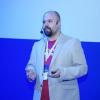As technology evolves, dated infrastructures can wreak havoc on businesses looking to scale their systems and operations. It is critical to have staff on board that are equipped to support the transition from legacy software to a platform that can handle an organization’s modern workload. Many organizations turn to microservices to increase scalability, time to market and DevOps agility.
While delivering on these promises, microservices architecture brings its own complexities to the table. Red Hat Training is dedicated to helping organizations and individuals develop and troubleshoot these applications using tools such as Apache Kafka and Red Hat AMQ Streams. We recently introduced a new training course, Developing Event-Driven Applications with Apache Kafka and Red Hat AMQ Streams (AD482), which teaches fundamental principles and features of these tools.
Helping developers tackle microservice challenges

Developing Event-Driven Applications with Apache Kafka and Red Hat AMQ Streams (AD482) teaches the fundamental principles and features of Kafka and AMQ Streams, allowing students to learn how to design, develop, and test event-driven applications. This course is ideal for application developers with microservice development experience looking to expand their understanding of Kafka and AMQ Streams.
The accompanying certification exam, the Red Hat Certified Specialist in Event-Driven Development with Kafka exam (EX482), will be available later this fall. The exam tests your skills and knowledge with regard to coding event-driven applications using Apache Kafka and developing Apache Kafka Streams.
By passing this exam, you become a Red Hat Certified Specialist in Event-Driven Development with Kafka, which also counts toward earning a Red Hat Certified Architect (RHCA) certification.
Scaling with event-driven architecture
One of the most challenging components to manage is the communication between microservices. Take, for example, a traditional microservice architecture that uses an HTTP-request based system to communicate. The lack of a built-in fault-tolerance mechanism can result in a variety of latency and performance problems, often causing frustration as the amount of data grows in tandem with the organization. This makes it challenging to meet customer expectations of immediate results.
Microservices architectures that are distributed in cloud-native environments can still have monolithic data, causing “data coupling.” Event-driven architecture provides a design pattern for managing consistency and complexity in high-scale systems, addressing many of the common challenges that developers face.
In short, it means that the messaging draws upon an event backbone used in the architecture to capture communication, processing, and persistence of events and their flow through the system. With event-driven applications using Kafka and AMQ Streams, organizations can globally scale their applications, store and stream process data without the risk of tight coupling, and provide feedback to customers with extremely low latency.
In order to implement these practices and improve efficiency and scalability, it is key to understand the architecture of (and how to use) Kafka and AMQ Streams. It’s also crucial to identify the correct use cases when it comes to implementing event-driven applications.
More about Red Hat Training & Certification
Enterprise-level infrastructure challenges require top notch support, and Red Hat Training and Certification is committed to providing relevant and timely training to ensure that staff is well-equipped for the task. We are constantly iterating course and exam offerings to keep pace with the evolving industry, providing both expertise and flexibility. Discover how you can gain access to the entire catalogue of Red Hat Training, including early access to new releases, through Red Hat Learning Subscription. You can also join the Red Hat Learning Community to gain insights and advice from peers within the industry and Red Hat portfolio experts.
Get started
Learn more about our new course can help you develop event-driven applications by checking out the course overview. For a preview of this course, register for the on-demand webinar, "A day in a coffee shop: Building event-driven systems with structure."
About the author
Aykut Bulgu, a Services Content Architect at Red Hat, has worked as a software engineer, consultant, and trainer for 15 years. He has worked on many enterprise projects—mainly Java—and used many open source projects including the JBoss middleware. Currently, he works with open source projects such as Apache Kafka, Camel and Strimzi to create optimum courses. He enjoys disseminating the System Craftsmanship culture and co-organizes events for the Software Craftsmanship Turkey community.
Browse by channel
Automation
The latest on IT automation for tech, teams, and environments
Artificial intelligence
Updates on the platforms that free customers to run AI workloads anywhere
Open hybrid cloud
Explore how we build a more flexible future with hybrid cloud
Security
The latest on how we reduce risks across environments and technologies
Edge computing
Updates on the platforms that simplify operations at the edge
Infrastructure
The latest on the world’s leading enterprise Linux platform
Applications
Inside our solutions to the toughest application challenges
Original shows
Entertaining stories from the makers and leaders in enterprise tech
